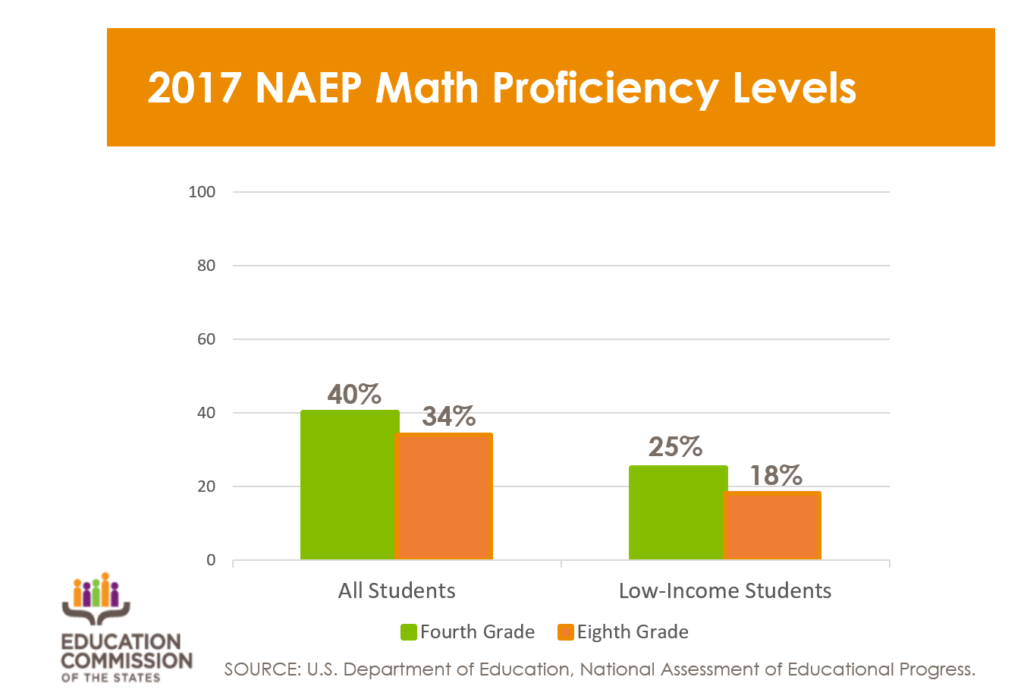The United States is experiencing a supply and demand mismatch in science, technology, engineering and math (STEM) fields, with roughly 3 million more open jobs than there were trained professionals to fill them in 2016. To address this issue, we are embarking on a new project to support education policymakers in their efforts to fill these STEM jobs by focusing on the preschool-through-third-grade years.
For years, state policymakers have been grappling with how to prepare students in STEM, from developing new STEM standards to creating STEM centers and councils to lead local and state efforts. Yet, despite these efforts, the U.S. continues to fall behind in international math and science rankings. On the 2015 Programme for International Student Assessment, U.S. 15-year-olds ranked 39th (of 70 comparable countries) in math and 25th in science.
Data from the U.S.-specific National Assessment of Educational Progress shows low proficiency rates beginning as early as elementary school that get worse over time:

Yet young children have strong capacities for learning and retaining core math and science concepts. Consider the following research-based findings:
- Young children can both think concretely and abstractly and use a range of scientific reasoning processes.
- Even infants can reason, problem solve and test physical hypotheses by observing objects behaving in unexpected ways.
- Early math skills (acquired between the ages of 4-6) are the strongest predictor of academic achievement at age 15 (even more so than literacy skills).
- Students engaged in STEM by the time they are adolescents are more likely to pursue the field as adults.
Educating young students in STEM is a strategy that has historically been embedded within our focus on improving outcomes for P-3 students and creating a strong foundation for future learning and growth. More recently, through the Arts Education Partnership, we have been tackling STEAM education, which addresses the integration of the arts into STEM education. Our interactive Vital Signs website presents data on the condition of STEM education in every state and the district of Columbia
Now, with funding from the Heising-Simons Foundation, our new project will begin in September with a meeting of top experts in STEM and early learning, resulting in a report and in-depth, state-level support through 2021. By providing information and guidance toward developing a systemic approach to early STEM education, this project aims to help state education policymakers build a stronger pipeline to fill the growing STEM workforce needs in their states.










